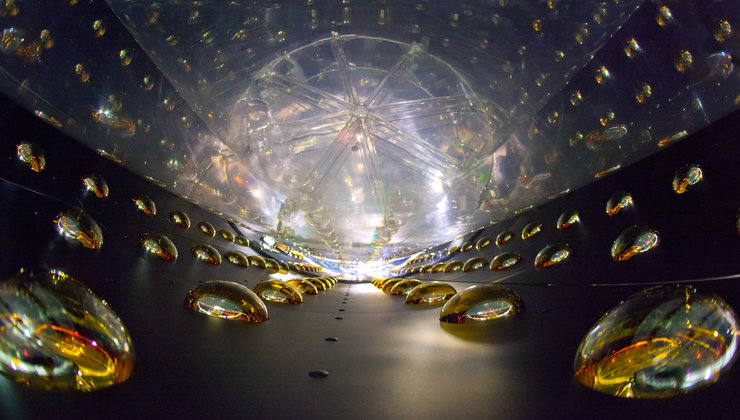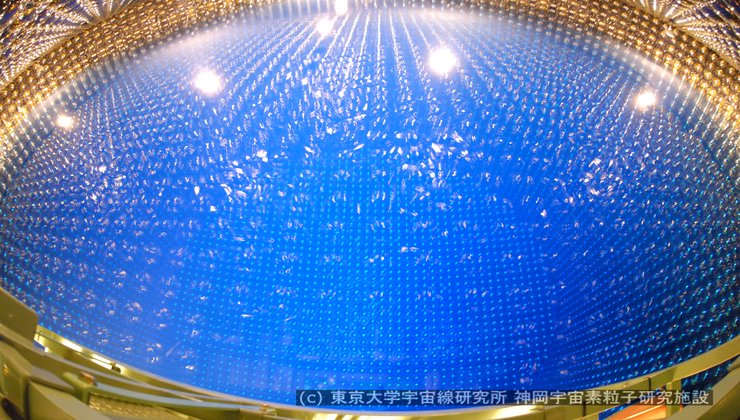Computers as an aid to the theorist: Krishna Mohan Parattu on searching for theories to explain the mixing of neutrinos
-
April 16, 2022
-
912 Views
-
0
Likes
-
Comment
Focussing on the specific case of building models of neutrino mixing from discrete symmetry groups, we showed that computers, in addition to their important role in the various numerical and algebraic computations required after a theory has been specified, can be used as an effective aid for scientists working on theoretical models.
Could you please first provide the necessary background, an overview of your research area, to help our readers understand your research project?
This is a project on which I worked a few years ago. We were trying to understand how the elementary particles called neutrinos mix, and for this we used computers to scan over various possible theories.
Neutrinos are very interesting particles. They are the lightest particles with non-zero mass. (There are particles with zero mass, like the photons making up light.) We still do not know their masses. To explain why this is the situation, we shall first recap the story of neutrinos thus far. Pauli proposed that there should be a neutral (zero charge) particle accompanying the electron in the nuclear process called beta decay, because otherwise some conservation laws like the law of conservation of energy seemed to be violated.
After the neutron was discovered, this particle was called "neutrino" (meaning "little neutron" in Italian). Soon scientists discovered a heavier cousin of the electron, called the muon. It had the same charge and spin as the electron but was about 200 times heavier. Some decades later, an even heavier cousin was found, called the tau. This one was more than three thousand times heavier than the electron! It turned out that each of these particles came with their own sidekick neutrinos. So now we have the electron neutrino, the muon neutrino and the tau neutrino. All were thought to have zero masses. Then there came the surprising discovery that these neutrinos can change into each other even while traveling through empty space! This phenomenon is called neutrino oscillation and we can only explain it if the three neutrinos have different masses. So at most one neutrino can have zero mass. Scientists use three numbers, called neutrino mixing angles, to describe how fast neutrinos turn into each other. There is also another number, called a phase, which appears because these rotations are done using complex numbers, unlike the rotations in our usual 3D world.
These numbers can be measured from experiments. Neutrino oscillations depend on mass differences of the neutrinos and so we can get that information too. (More accurately, electron, muon and tau neutrinos don’t have precise masses. It is three different combinations of these neutrinos that have three definite masses.) From other experiments, we can place upper limits on the masses.

Photomultiplier tubes in Daya Bay neutrino detector designed to study the oscillation of neutrinos coming from nuclear reactors (Image courtesy: Brookhaven National Laboratory, available at https://www.flickr.com/photos/brookhavenlab/6818362448 licensed under CC BY-NC-ND 2.0 [https://creativecommons.org/licenses/by-nc-nd/2.0/])
Describe what was the aim of your research project
Scientists have been trying to come up with some theory to explain why there are three types of “electrons” and neutrinos and to explain the values of the three angles of neutrino oscillations (and the phase). One way to do this is to assume that the interactions of these particles obey some symmetry. Symmetries, finding that certain properties do not change even after some change to the system, have a glorious role in the history of physics. Einstein started from the assumption that the speed of light does not change even if the observer starts moving and gave us the theory of relativity. Emmy Noether’s mathematics showed us how symmetries can tell us why some things are conserved. For example, the law of conservation of energy is related to the fact that the laws of physics do not change with time. The standard model of particle physics is also built upon symmetries and predicted things like the Higgs particle. An extra symmetry added to the standard model may help predict the fact that there are three different kinds of “electrons” (and neutrinos) and may also give us the mixing angles.
Consider a cow. Cows are symmetric creatures. If the right side of our cow is purple then we expect that there is a wrong side that is purple too. Similarly, an extra symmetry could tell us that if the electron exists then muon and tau must also exist. We wanted to follow this idea focussing on predicting the mixing angles. For this, we used groups, structures in maths that are very suited for describing symmetries. Scientists start with a group, which means some sort of symmetry, and then build a model that in the end gives you some mixing angles. If you do it smartly, you can get a model that gives you results within the ranges set by experiment. But this is hard work and one model is generally one research paper. We decided to use computers to do the hard work for us since the process follows well-defined rules. That way, we could have the computer construct thousands of models and give us the models that match with experiments.
Now, symmetries can be continuous or discrete. Continuous symmetries are symmetries under some action that you can perform continuously, for example the symmetry of a circle under rotation. Discrete symmetries deal with symmetries under discrete changes. A square is symmetric under rotations under multiples of 90 degrees but not for any angle in between. Discrete symmetries correspond to discrete groups, which are more manageable than continuous groups. We decided to use a language called GAP, a system for computer algebra that has the maths of groups built in, and interface it with Python language to build models. So, the idea was that GAP will go through a list of groups and pass the information to Python, which will use that information to construct models for each group, calculate the mixing angles and then compare them with experiments.

Water tank with photomultiplier tubes at Super-Kamiokande neutrino detector (Credit: Kamioka Observatory, ICRR(Institute for Cosmic Ray Research), The University of Tokyo)
What were the new results from your research?
Previously, scientists had found that a few discrete groups can give mixing angles within the ranges set by experiment. So, was there anything special about these groups? Or could we use other groups also to construct successful models? We ran the scan and were surprised to find a huge number of models that can match experiments! We found such models for 44 of the 76 groups that we looked at. For each of these groups, we could construct many successful models, sometimes thousands! For example, there was this group that was popular in the literature at that time that we used as our trial group, i.e. the first group to scan over to test if our code was working properly. For that group itself, we could construct 22932 models, of which 4481 matched experiments. If we had taken these models one by one and published a paper every week, we would have had enough material for our whole academic lives! Of course, it is not that easy. Even if you know that a model is successful, it might take some work to write all the details as a research paper. In fact later, after we published this paper, we took one of the successful models (with the smallest group among the 44 successful groups) and analyzed it by hand with another researcher. This was an important check to see if everything was right with our code. The results matched with what we had obtained from the computer and we published that model as a separate research paper.

A 3D map of the models we found. Each point in this space corresponds to some values of the three angles. Each colored dot represents a value for which the computer could construct a theoretical model. The color is a measure of the number of models, with the number increasing from bluish to reddish colors, i.e. as we move along the VIBGYOR spectrum.
Would you like to introduce our readers to your collaborators on this project?
My senior collaborator on this project was Akin Wingerter, a German researcher who was a postdoctoral scholar at Indian Institute of Science, Bangalore when we started working on the project. At that time, I had just finished my MSc in Physics and was spending one year at IISc as a project assistant. We finished it one year later after Akin had moved to France to join LPSC, Grenoble for another postdoc and I had joined IUCAA, Pune for my PhD. Later, for the next paper that derived from this project, we collaborated with Christoph Luhn, who was then a postdoc at the University of Durham.
What are the future prospects in this research direction?
When we published our paper, there was a possibility that one of the mixing angles is zero. But since then, experiments, including the Daya Bay neutrino detector pictured above, have shown that this angle is non-zero. So the allowed values from experiments have changed. Other groups have carried out computer scans with updated experimental values. But they seem to be getting successful models only with a few, very complicated groups. In physics, we generally feel that we are missing something if things get too complicated. Suffice to say, right now there is no suitable model for the mixing angles that the community is happy with. So there is work to be done in this direction. I do not currently work in this area. I did my PhD in the field of gravity and have not worked on neutrinos since 2012, when the second paper in this project came out.
List of References
Cite this Page as
Keywords
neutrinos
computers
group theory
neutrino oscillation
discrete groups
particle physics
neutrino mixing angles
family symmetries
lepton families
standard model of particle physics















